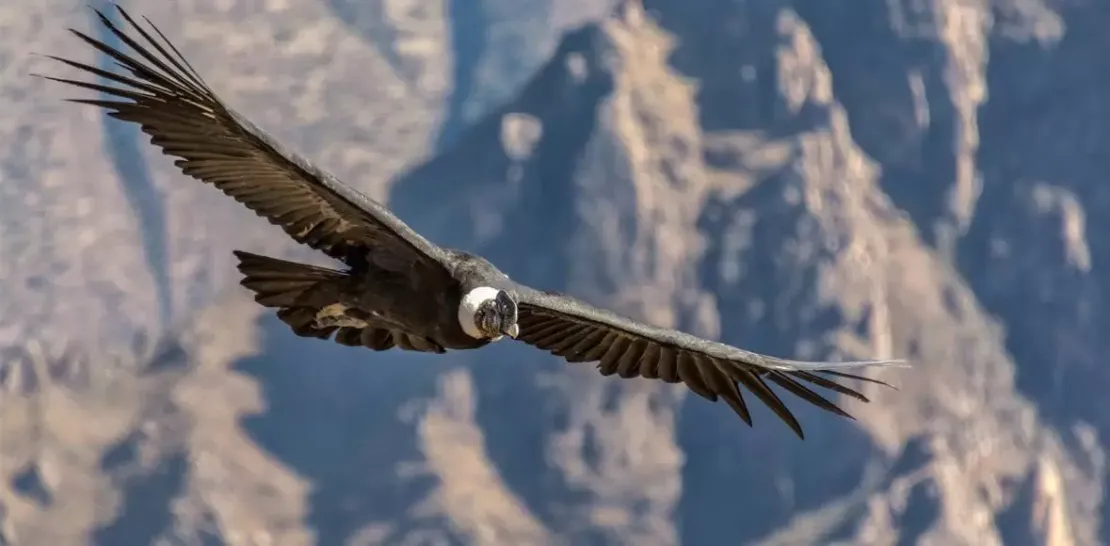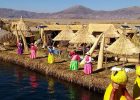If you’ve ever dreamed of exploring cloud forests, endless jungles, or mountains that touch the sky, Peru is the ideal destination for you. This country is home to one of the world’s greatest biodiversity treasures: more than 1,850 bird species, of which more than 300 are unique to Peruvian territory. Whether you’re a passionate birdwatcher or simply someone who enjoys admiring the beauty of wildlife, here you’ll find species that seem straight out of a fairy tale.
We present a selection of 10 emblematic birds of Peru, each with its own charm and special habitat:
1. Andean Cock-of-the-rock (Rupicola peruviana)
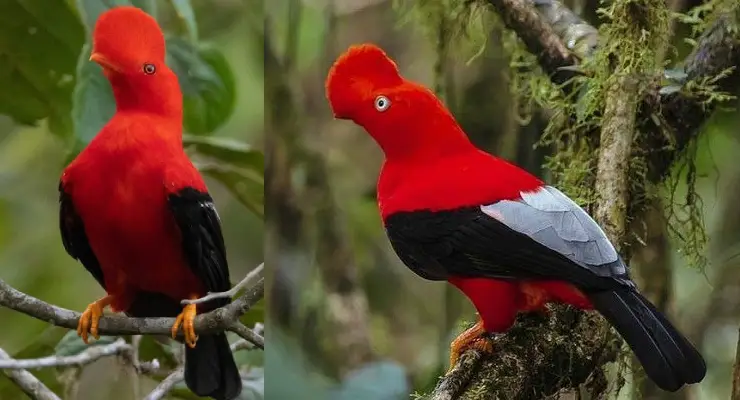
Considered the national bird of Peru, the Andean Cock-of-the-rock is unmistakable for its striking orange plumage and elegant crest. The male displays a hypnotic contrast between the bright color of its head and the black wings with white touches. It is shy and usually remains hidden in the thickness of the jungle, although during mating season, they gather in groups to perform “leks,” an unmissable visual and auditory spectacle.
Where to see it: Amazon highlands, especially in the Machu Picchu Sanctuary and Manu.
2. White-winged Guan (Penelope albipennis)
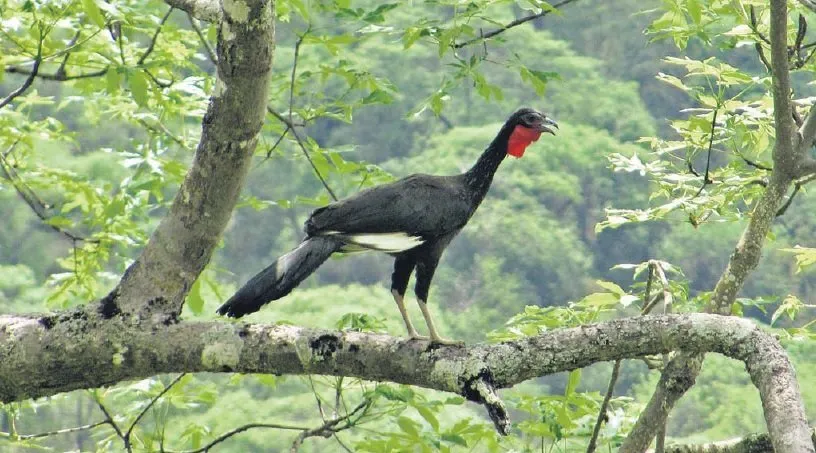
A little-known jewel of northern Peru. This elegant black bird with white wings is one of the most threatened species in the country. It is characterized by its long tail, pink legs, and a featherless orange throat patch. It lives in coastal dry forests and is a symbol of conservation in areas like Laquipampa.
Where to see it: Dry forests of Lambayeque, Piura, and Tumbes.
3. Marvelous Spatuletail (Loddigesia mirabilis)
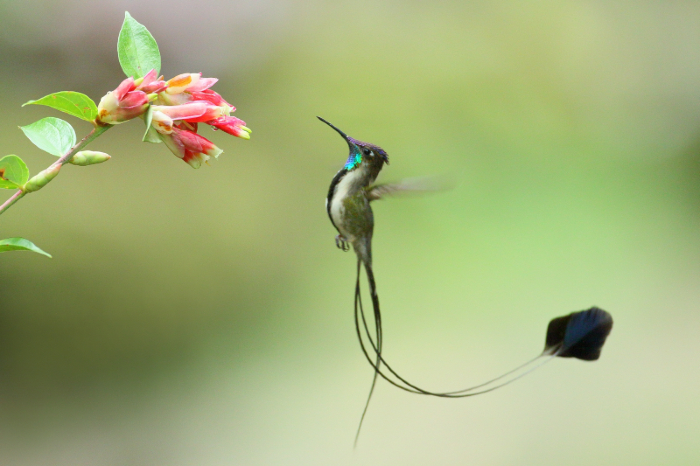
Small, brilliant, and almost magical. This endemic hummingbird has dazzling plumage and a unique tail with spatula-shaped feathers that float like fans. It is one of the rarest hummingbirds in the world and only inhabits specific areas of the Peruvian Amazon.
Where to see it: Amazonas region, in areas such as Leymebamba and the Alto Mayo Protection Forest.
4. Peruvian Plantcutter (Phytotoma raimondii)
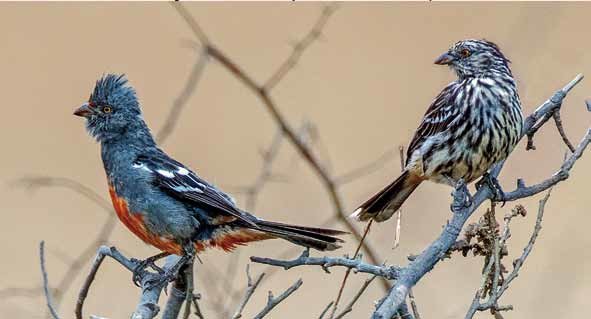
A charismatic and endangered species, the plantcutter inhabits arid zones of the Peruvian coast. It is recognized by its powerful crest and its plumage that mixes gray and reddish tones. The male, more colorful, has white spots and an orange coloration near the beak.
Where to see it: Around Lima, such as Lomas de Lachay and coastal areas of the northern Lima region.
5. Andean Condor (Vultur gryphus)

Majestic and ancestral. The condor is one of the largest flying birds on the planet and an icon of Andean culture. It can reach a wingspan of up to three meters and glides effortlessly on the air currents of the Andes. It is a symbol of power and wisdom, although it is currently at risk.
Where to see it: Colca Canyon, Apurímac Canyon, and high areas of the southern highlands.
6. Long-whiskered Owlet (Xenoglaux loweryi)
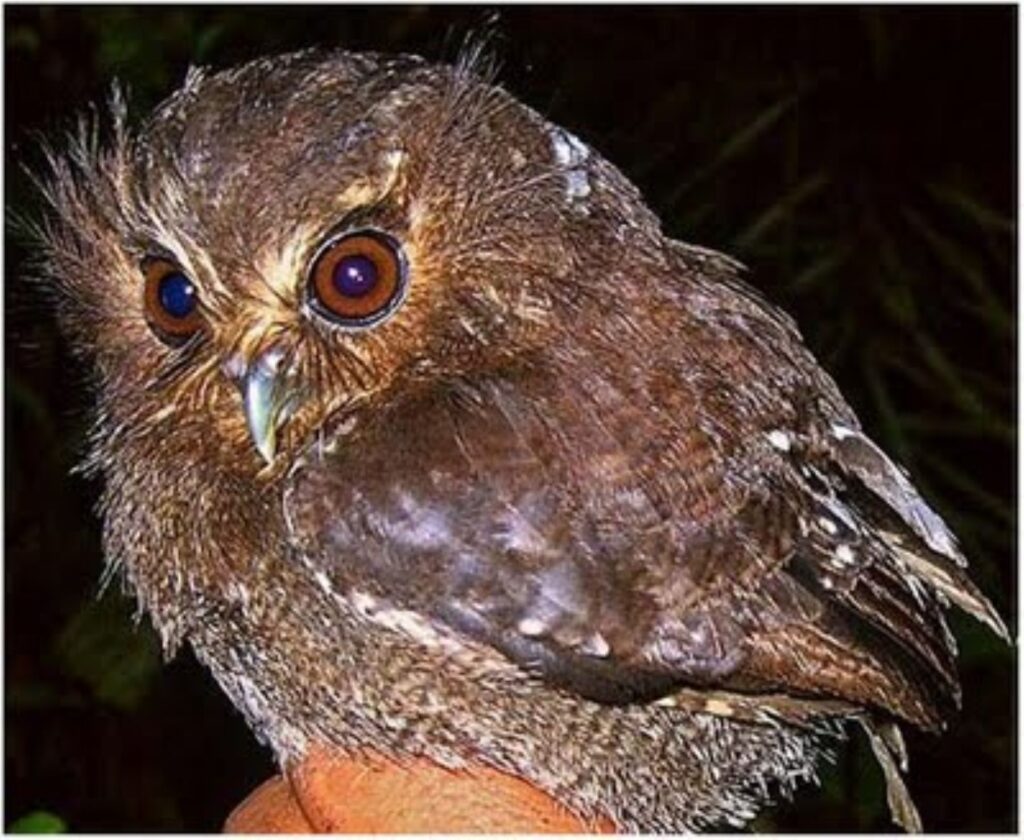
Small, mysterious, and very rare. This tiny owl measures only 13 cm and is distinguished by its “whiskers” of long feathers that surround its face. It lives in humid and cloudy forests of northern Peru and is very difficult to observe, which makes it even more special.
Where to see it: Amazonas and San Martín regions, in protected areas such as Abra Patricia.
7. Cactus Canastero (Pseudasthenes cactorum)
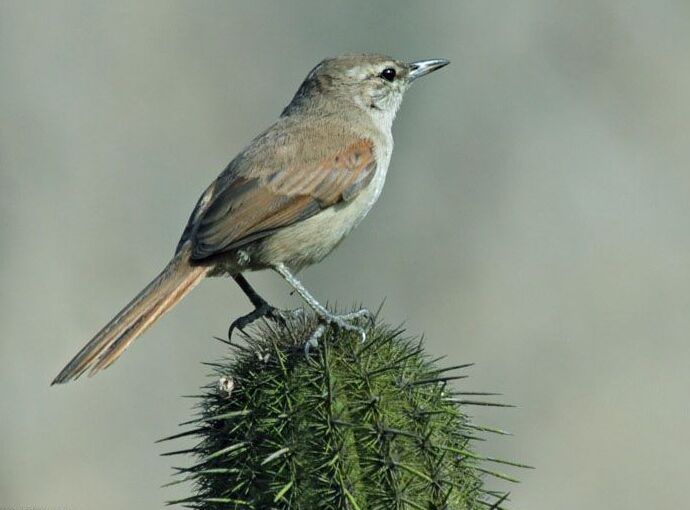
A discreet but peculiar bird, adapted to the dry landscapes of southwestern Peru. It has pale plumage, with orange details on the chin and a dark tail. It lives among cacti and shrubs, and its sharp song can reveal its presence.
Where to see it: Arid zones of Arequipa, Ica, and Lima.
8. Junín Grebe (Podiceps taczanowskii)
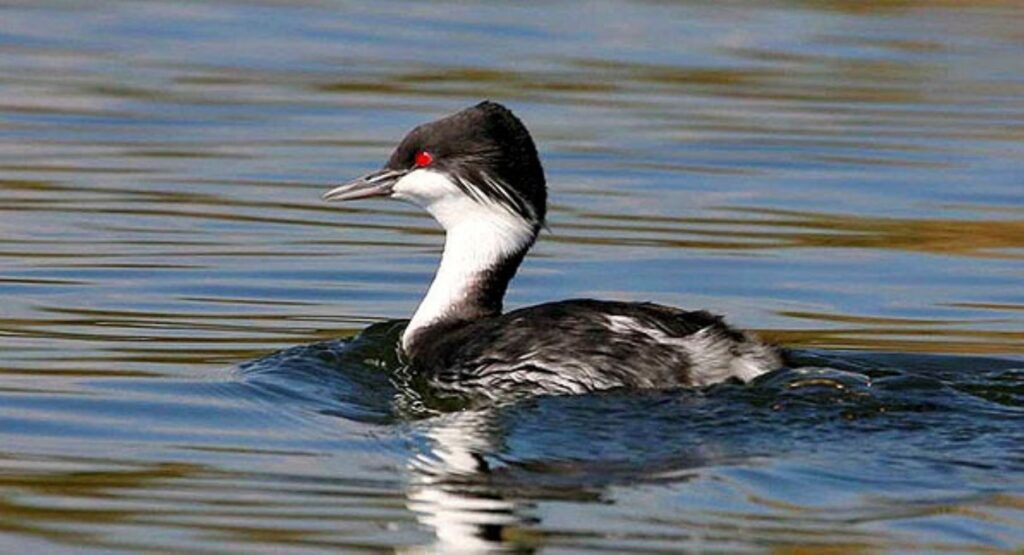
This aquatic bird doesn’t fly but is an excellent swimmer. It lives exclusively in Lake Junín, where it feeds on small fish and insects. It has a calm behavior and usually moves in pairs or small groups. Due to its restricted habitat and lake pollution, it is seriously threatened.
Where to see it: Lake Junín (Chinchaycocha), in the Junín region.
9. Dark-bellied Cinclodes (Cinclodes patagonicus)
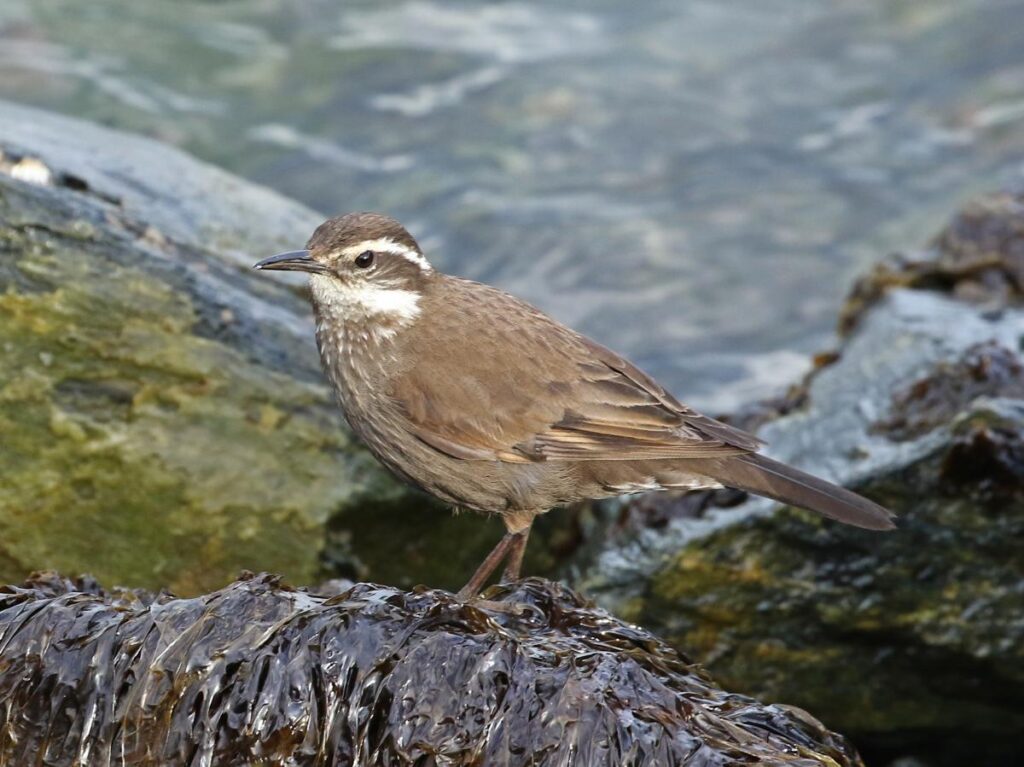
This grayish bird inhabits the humid and cold forests of the highlands. It has a sober but elegant appearance, with white lines around the eyes and spots on the chest. It is very sensitive to deforestation, and its population has notably decreased.
Where to see it: Queñual forests in Cusco, near Machu Picchu.
10. Chilean Flamingo (Phoenicopterus chilensis)
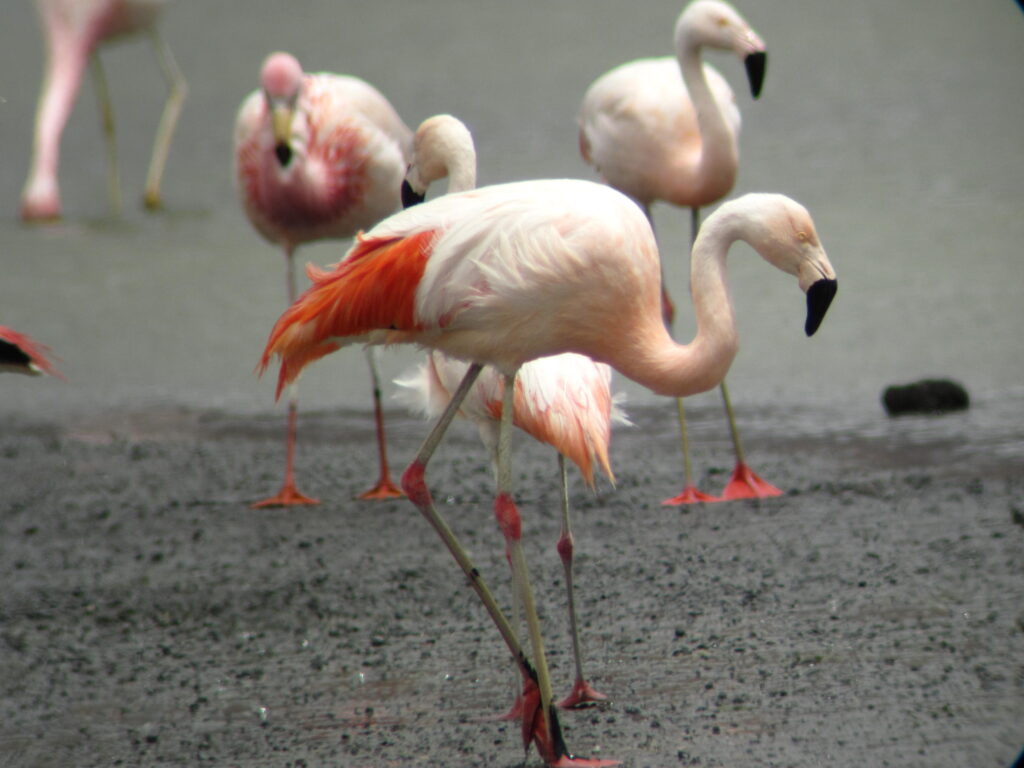
With its pink tones and elegant walk, the Chilean flamingo is one of the most emblematic birds of the Peruvian altiplano. It has been the inspiration for legends, and it is even said that its color was part of the inspiration for the national flag. It forms large groups and migrates between high Andean lagoons and the coast.
Where to see it: High Andean lagoons of Arequipa, Moquegua, Puno, and also on the central coast in certain months.
